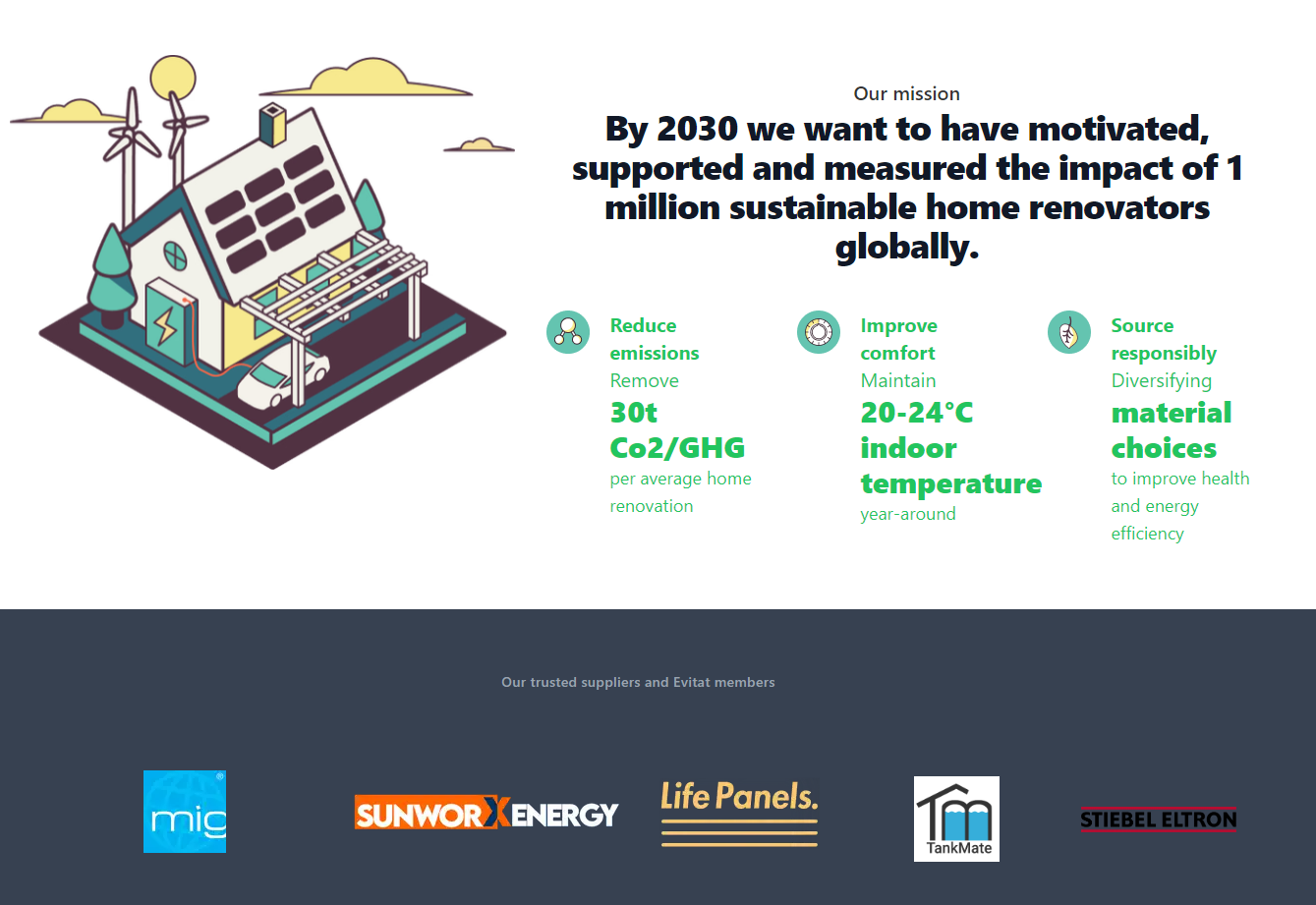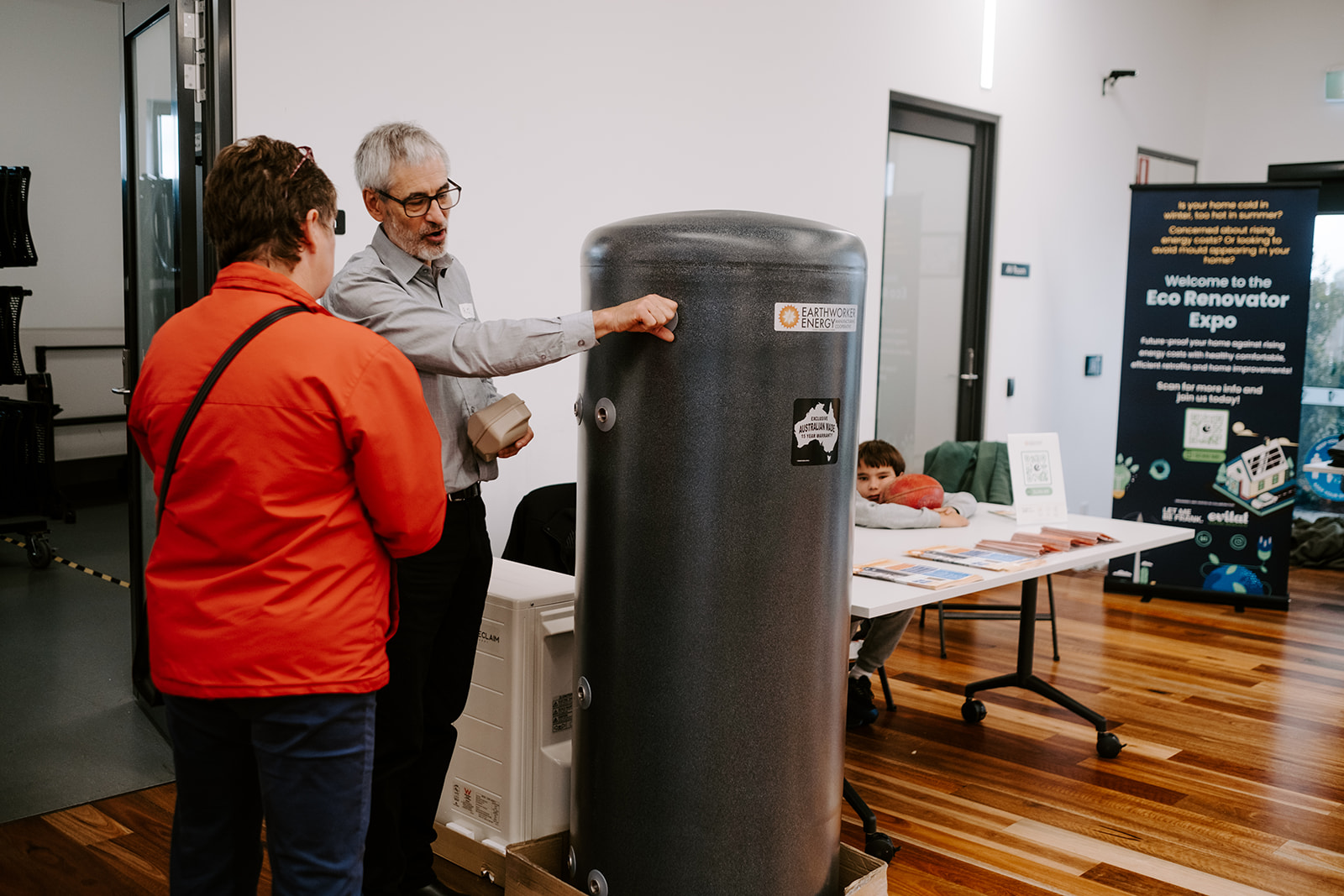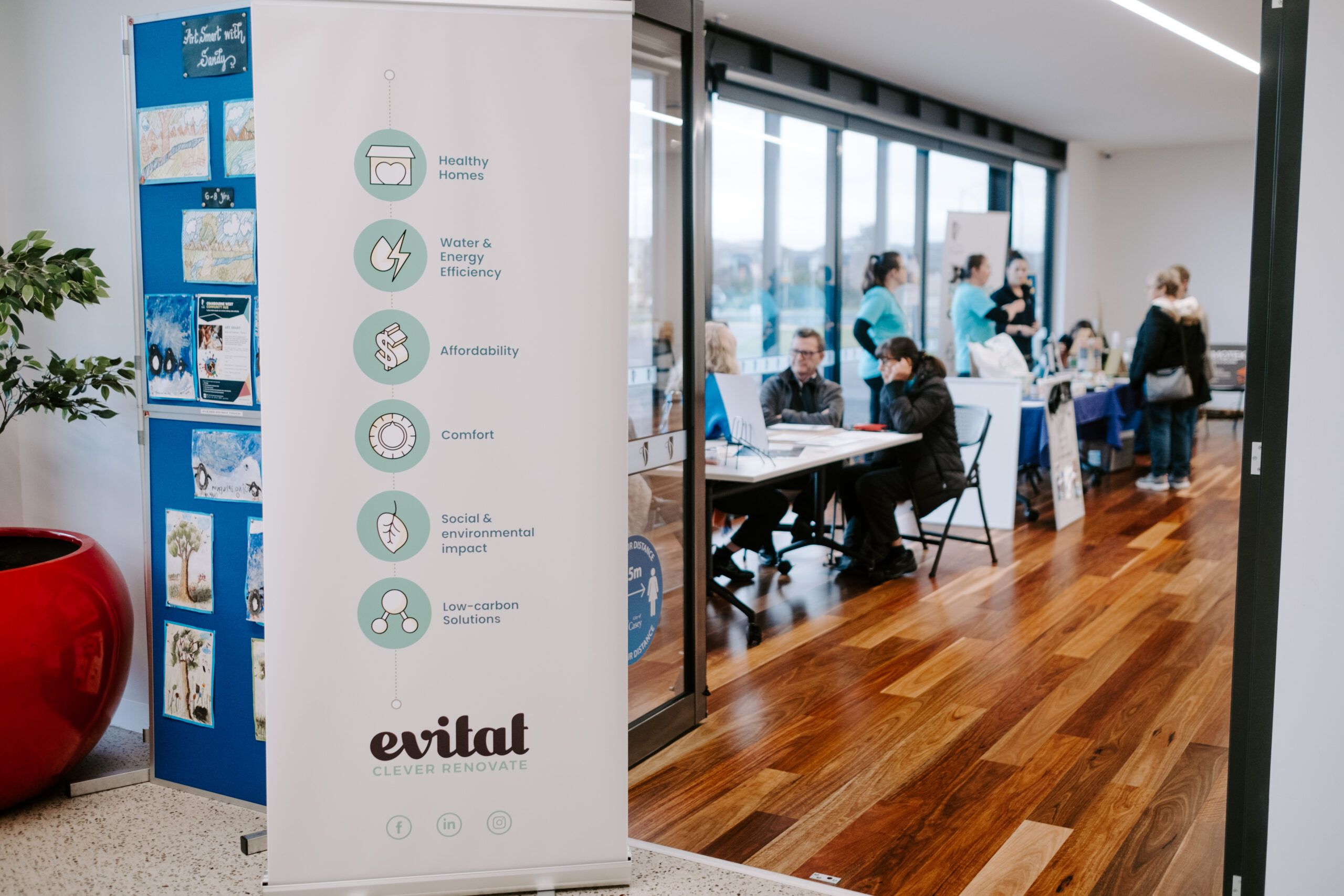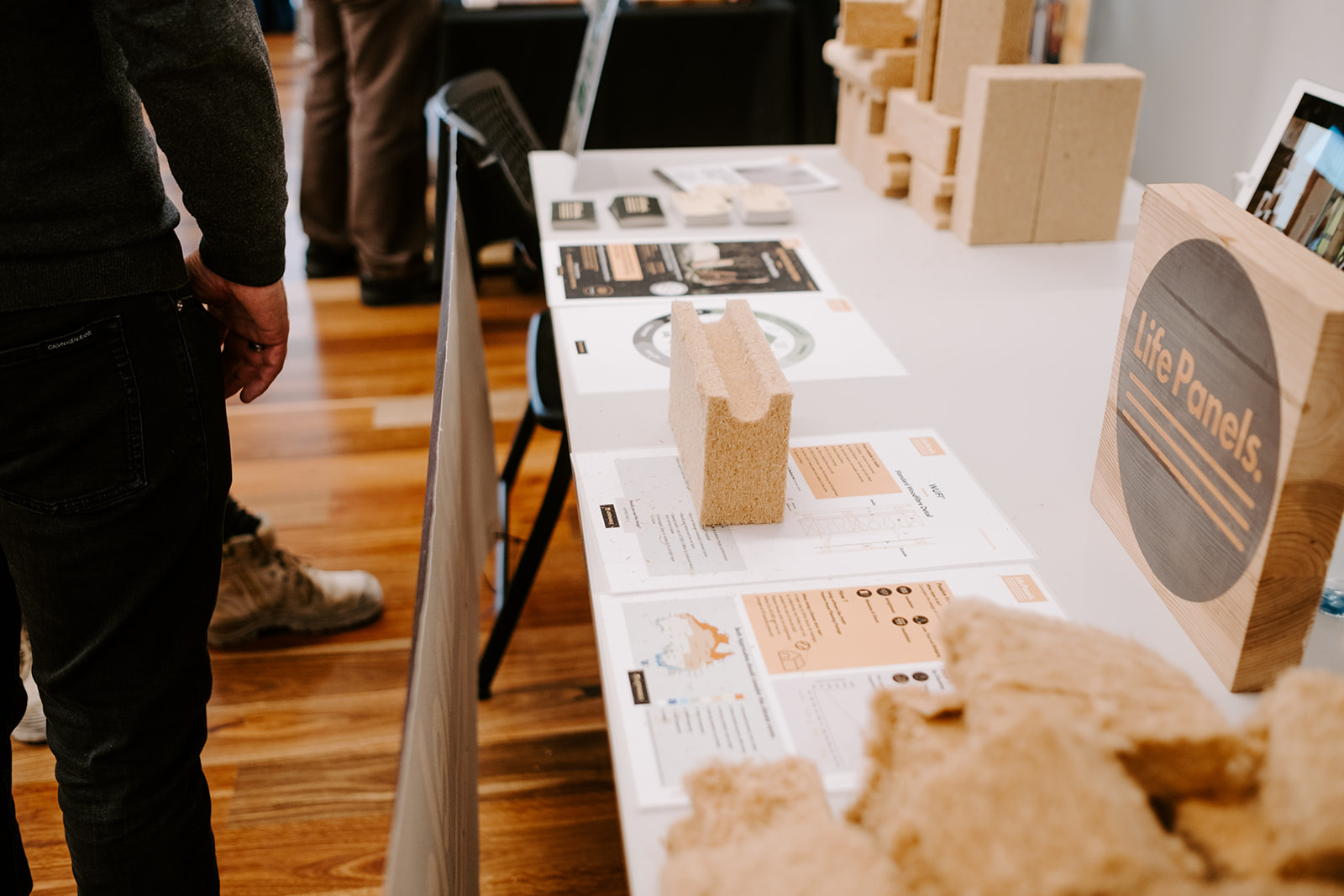
Find out why I’m so impressed with the Evitat platform, and how it can help in your sustainable reno!
By 2030, Evitat CEO and co-founder Sonja Markovic aims to have helped 1 million people achieve more sustainable renovations. How? Through a tech platform that makes decisions easier, positively impacting the health of homeowners, and the planet. And how’s this: it could also boost your property value.

Sonja Markovic’s background is in human-centred design and technology. Migrating to Australia from Germany in 2015, she took the first steps towards establishing Evitat in 2020, after reaching a personal tipping point.
“I already knew I wanted to make really conscious choices about the projects I was involved with, and give back to society,” Sonja says. But she realised there was always a weak point – economics. “Money and investment drive everything,” she says.

Sonja was very aware of the climate emergency, the fact that we’re reaching the limits of our planet’s resources, and was passionate about creating a more sustainable future. She did a masterclass with Kate Raworth of Doughnut Economics to learn more about transforming economies so they balance human needs with Earth’s life-supporting systems.
And then the pandemic hit.
“That’s when I returned to an idea I’d had years before, about the meaning and purpose of a ‘home’ and how far removed we are from our connection to home,” Sonja says.
Instead of being driven by profit alone, Sonja believes renovating and building homes should also be about making healthier homes that perform better and last longer.
How I met Sonja
Around the time of her epiphany, Sonja got in touch with me. She had watched a video I made for Sustainable House Day in 2020 – it’s on my home page if you haven’t seen it. What resonated with her was my message about having clear objectives. (In my case, I showed what can go wrong if you don’t have clear objectives!)
Sonja’s core purpose with Evitat is helping people clarify their needs and aspirations with their building projects. As she says, “there is a huge opportunity to make better decisions than we do on average.”

Lots of people aren’t aware of the realities of engaging a builder or an architect. The first message that Sonja wants to get across is, they’re not necessarily working to your objectives. If you leave all the decisions to them, they might be choosing third parties that suit their business model, rather than your objectives. (Something I’ve seen first-hand.)
Which is how we often end up with a disconnect between the dream home we’d imagined, and what we actually get.
She and her executive team want to help close the gap between educating residential property owners on sustainability, and taking action.




Lots of people aren’t aware of the realities of engaging a builder or an architect. The first message that Sonja wants to get across is, they’re not necessarily working to your objectives. If you leave all the decisions to them, they might be choosing third parties that suit their business model, rather than your objectives. (Something I’ve seen first-hand.)
Which is how we often end up with a disconnect between the dream home we’d imagined, and what we actually get.
She and her executive team want to help close the gap between educating residential property owners on sustainability, and taking action.

There are two key steps in that process.
The first is goal setting, getting clear about your needs and aspirations so you can steer your budget in the right direction. Are you most concerned with quality, health, well-being, comfort? Or aspirational criteria like decarbonisation and using local manufacturers etc.? Or both? Goals should be integral to your thinking.

Then, the second step involves recording your journey in an Evitat logbook, something Sonja and her team developed with a mentor, as part of an accelerator program.
Similar to a service log for cars, it’s a place where a homeowner can record all the decisions and investments you’re making in sustainable home improvements, and inform other people about what that means (i.e., 100% transparency.) You also set goals across six categories, and within those, make choices, editing as you become even more clear on what’s important to you.
The wealth aspect
Decisions made with the help of Evitat convert into long-lasting value for your home.
“You end up with a report of everything you’ve done over the years, which you can give to a future buyer so they know about all the benefits they get in buying this property,” Sonja says.
Compared to somewhere like Germany, Australia has a lackadaisical approach to selling houses, in Sonja’s view.

“In Europe, a buyer will ask about the thermal performance of the home and the last time the electrical wiring was upgraded. In Australia, it’s not even a consideration – people buy blindly,” she says.
As the impacts of climate change ramp up, being able to de-risk a property, and having a track record of all your sustainable, energy efficiency and climate-resilient improvements, helps buyers identify properties that are better for people and the planet.
These include decisions about materials and design. Also about size. As Sonja points out, Australia has now topped the world in terms of average house size. We can talk about EVs, but it won’t actually achieve the carbon reduction we need if keep building houses that are 300m2 or more.
Ultimately the logbook and the focus it demands open people’s horizons, and help you tap into areas you might never have thought of.
The broader platform
There is also a community component to Evitat – a way for people to share advice. I have actually received good advice on products here myself. I posted a question about sustainable tiles and an Evitat member pointed me in the direction of Kandui. Kandui recycle “waste” materials and turn them into new, beautiful tiles. I have a blog on Kandui coming up soon hopefully.
And even better, the platform is free.
Sonja hosts forums for suppliers and renovators, exploring the benefits of certain materials or product choices, through the lens of owners’ needs and aspirations.

And there’s also the “two-sided marketplace”. Evitat invites interested suppliers to join the platform, mapping them across sustainability criteria, vetting and benchmarking them. That means a lot fewer headaches for renovators when they’re figuring out the benefits of a supplier’s product, and highlights what the company is doing in their sector.

“Some of these companies have been very engaged in their local community projects or environmental projects for many years,” Sonja says. “Showcasing that is a great way for them to have a clear positioning and differentiation in the market.”
The future of Evitat
It’s early days yet, but Sonja sees so much opportunity for the platform, starting with giving a leg-up to local manufacturing, even into international markets. Helping suppliers be more visible, and more affordable for more people. Expanding the Evitat ecosystem to include not just residential consumers but responsible businesses. Onboarding builders and architects who are subject to increasingly strict sustainability standards and are grappling with supply chain issues.


Evitat is already collaborating with a partner organisation to establish what net zero means in the built environment supply chain, and how that can be aligned with the global 1.5 degrees benchmark. In future, a homeowner’s logbook will show how every decision has helped align with that goal.
If you’re renovating, and you want to feel informed and confident that it’s your needs and aspirations shaping your project, go to the Evitat website and start your logbook now!
